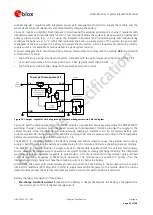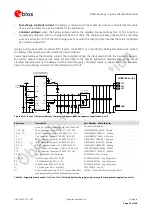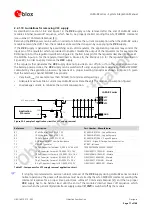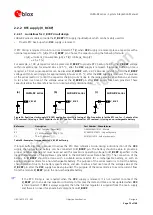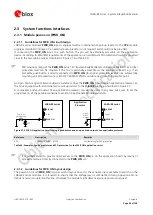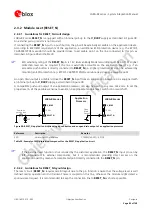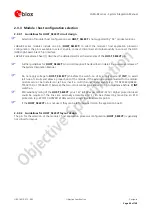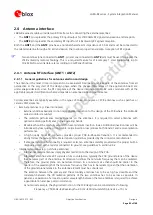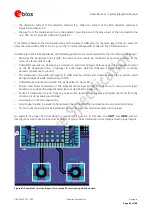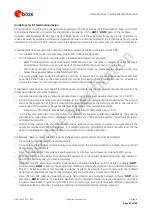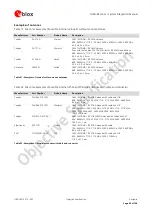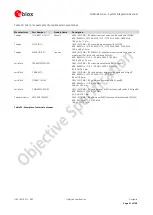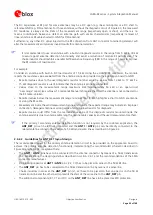
LARA-R2 series - System Integration Manual
UBX-16010573 - R02
Objective Specification
Design-in
Page 89 of 148
Guidelines for RF termination design
RF terminations must provide a characteristic impedance of 50
as well as the RF transmission lines up to the RF
terminations themselves, to match the characteristic impedance of the
ANT1
/
ANT2
ports of the modules.
However, real antennas do not have perfect 50
load on all the supported frequency bands. Therefore, to
reduce as much as possible performance degradation due to antennas mismatch, RF terminations must provide
optimal return loss (or V.S.W.R.) figure over all the operating frequencies, as summarized in Table 7 and Table 8.
If external antennas are used, the antenna connectors represent the RF termination on the PCB:
Use suitable 50
connectors providing proper PCB-to-RF-cable transition.
Strictly follow the connector manufacturer’s recommended layout, for example:
o
SMA Pin-Through-Hole connectors require GND keep-out (i.e. clearance, a void area) on all the layers
around the central pin up to annular pads of the four GND posts, as shown in Figure 42.
o
U.FL surface mounted connectors require no conductive traces (i.e. clearance, a void area) in the area
below the connector between the GND land pads.
Cut out the GND layer under RF connectors and close to buried vias, to remove stray capacitance and thus
keep the RF line 50
, e.g. the active pad of UFL connectors needs to have a GND keep-out (i.e. clearance, a
void area) at least on first inner layer to reduce parasitic capacitance to ground.
If integrated antennas are used, the RF terminations are represented by the integrated antennas themselves. The
following guidelines should be followed:
Use antennas designed by an antenna manufacturer, providing the best possible return loss (or V.S.W.R.).
Provide a ground plane large enough according to the relative integrated antenna requirements. The ground
plane of the application PCB can be reduced down to a minimum size that must be similar to one quarter of
wavelength of the minimum frequency that has to be radiated. As numerical example,
Frequency = 750 MHz
Wavelength = 40 cm
Minimum GND plane size = 10 cm
It is highly recommended to strictly follow the detailed and specific guidelines provided by the antenna
manufacturer regarding correct installation and deployment of the antenna system, including PCB layout
and matching circuitry.
Further to the custom PCB and product restrictions, antennas may require a tuning to comply with all the
applicable required certification schemes. It is recommended to consult the antenna manufacturer for the
design-in guidelines for the antenna matching relative to the custom application.
Additionally, these recommendations regarding the antenna system placement must be followed:
Do not place antennas within closed metal case.
Do not place the antennas in close vicinity to end user since the emitted radiation in human tissue is limited
by regulatory requirements.
Place the antennas far from sensitive analog systems or employ countermeasures to reduce EMC issues.
Take care of interaction between co-located RF systems since the cellular transmitted power may interact or
disturb the performance of companion systems.
Place the two LTE antennas providing low Envelope Correlation Coefficient (ECC) between primary (
ANT1
)
and secondary (
ANT2
) antenna: the antenna 3D radiation patterns should have lobes in different directions.
The ECC between primary and secondary antenna needs to be enough low to comply with the radiated
performance requirements specified by related certification schemes, as indicated in Table 9.
Place the two LTE antennas providing enough high isolation (see Table 9) between primary (
ANT1
) and
secondary (
ANT2
) antenna. The isolation depends on the distance between antennas (separation of at least
a quarter wavelength required for good isolation), antenna type (using antennas with different polarization
improves isolation), antenna 3D radiation patterns (uncorrelated patterns improve isolation).

